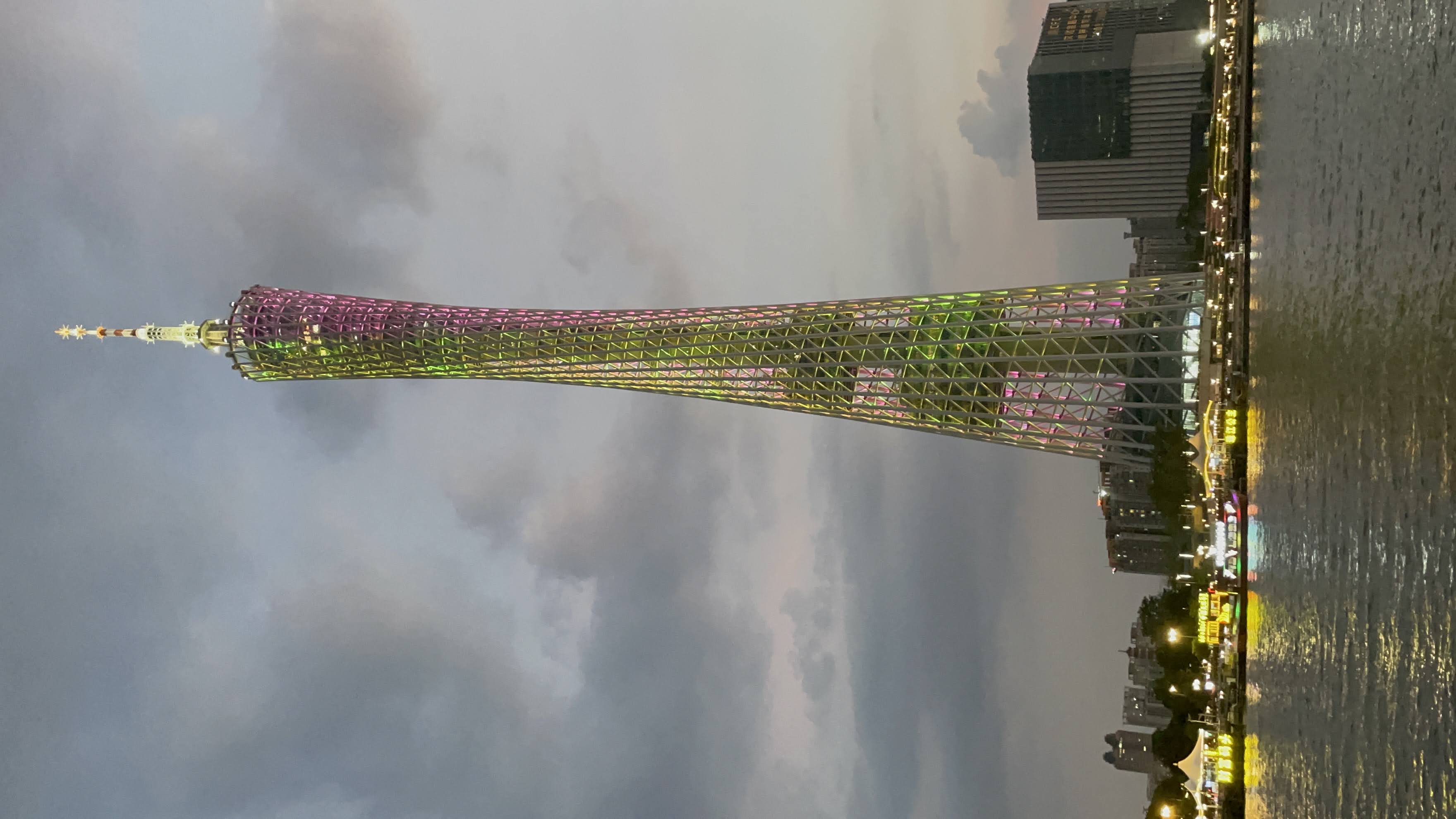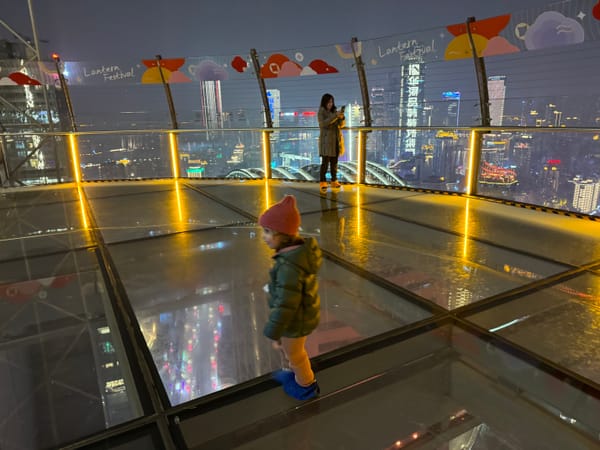Introduction: Why Visit Guangzhou?
With some 19 million inhabitants, an incredibly varied traditional cuisine, and an interesting past, Guangzhou is not only the beating heart of Cantonese culture but also earned the well-deserved title of Capital of the South.
And yet, due to its proximity to Hong Kong and Macau and its reputation as a fast-evolving, cutting-edge business hub, Guangzhou is sometimes overlooked by tourists, who often have the misconception that they won't find much to do there.
Indeed, while modern China today offers places like Shenzhen or Chongqing to all the tech-savvies out there, Guangzhou stands out as one of the most complete and diverse destinations in the country! History, tradition, good food, state-of-the-art architecture, a breathtaking skyline, and some unexpected mixed cultural traits - after all, the Cantonese speak a language of their own!
So if you are planning a trip to the south of China, Guangzhou is the perfect place where to spend 2-3 days. But keep in mind: the city is vast, and its landmarks are spread out, so a bit of planning is definitely recommended!
If you're unsure where to start or wondering how best to spend your time in this metropolis, you've come to the right place. Let’s explore Guangzhou together and discover the gems it has to offer!
Quick Facts About Guangzhou
Population: 19 million inhabitants
Location: Southern China, near Hong Kong and Macau
Language: Cantonese (local dialect) and Mandarin Chinese
Climate: Subtropical with hot, humid summers and mild winters
Best Time to Visit: November-December (autumn) or January-February (winter)
Famous For: Cantonese cuisine, historical architecture, modern skyline
Main Attractions: Canton Tower, Chen Clan Ancestral Hall, Shamian Island
Recommended Stay: 2-3 days
Transportation: Excellent metro system, international airport, high-speed rail connections

Best Time to Visit Guangzhou: Seasonal Guide
Autumn (November-December)
- Temperature: 17-25°C (62-77°F)
- Characteristics: Sunny, comfortable temperatures
- Recommendation: Best season to visit
- Note: Less rainfall
First thing to keep in mind here: Guangzhou has a subtropical climate and, trust me on this, it shows!
The temperatures rarely drop below 15 °C (59 °F) in winter and can reach 35/37 °C (95/98 °F) in summer, with extremely wet and humid weather. It can be quite challenging, especially if you are planning entire days outside to explore or if you travel with kids.
However, there's a silver lining: every place is air-conditioned, and malls and buildings are everywhere to help you cool down and relax. With a few strategic breaks and some precautions, it’s totally manageable.
Let's check the seasons in detail:
The Long Summer (May to October):
Summer is by far the longest season, with a peak in July-August when temperatures can reach 37 °C (98 °F) and the weather is extremely humid. This is when you should also expect more rain and the chance of typhoons is higher - no worries, the city is well-equipped for that, though brief transport disruptions are common.
Autumn (November-December):
Mid-seasons are brief in Guangzhou, and autumn is usually sunny but cooler (25-17 °C / 77-62 °F) - this may be the perfect moment to visit, as rainy days are also scarce.
Winter (January-February)
I wouldn't really say winter when it comes to Guangzhou! Temperatures never dip low and can still get up to 20°C/68°F - another great time to be here.
Spring (March-April)
In spring, temperatures start to rise again and by the end of April, they can get as high as 27°C/80°F! Also, rain becomes more frequent and is always best to bring your raincoat with you!
One last tip for you: you may link subtropical weather to dangerous mosquitos and this can be scary, but there's no need to worry! Mosquitos, bees, and insects in general are extremely rare in Guangzhou, even though the city bursts with green areas.
How to Get to Guangzhou: Transportation Guide
International Access
- By Air: Direct flights available from major cities
- Alternative Route: Fly to Hong Kong/Shenzhen, then take ground transportation
- Visa Note: Check requirements if entering via Hong Kong
Domestic Transportation
- High-Speed Rail Times:
- From Hong Kong: ~1 hour
- From Shenzhen: 40-60 minutes
- From Beijing: 8-10 hours
- From Chengdu: 7-9 hours
Being one of the last outposts before Hong Kong, Macau, and the Pacific, Guangzhou is excellently served by both domestic transportation and intercontinental airlines!
Let's dive deeper into this:
International air travel: Flights to Guangzhou are pretty common, being it a business hub. However, if you travel from Europe or North America, expect a layover. In this case, it can be more convenient to fly into Hong Kong/Shenzhen and then move to Guangzhou (but don't forget to check your VISA requirements if you land in Hong Kong!).
Domestic air travel: within China Guangzhou is well-served, and you can find several flights to/from places like Beijing or Shanghai. But if you are on a tourist trip, domestic flights can be time-consuming due to lengthy security procedures.
High-speed trains: definitely the best solution for tourists! Guangzhou is excellently connected to all major cities:
- Hong Kong: around 1 hour or less
- Shenzhen: 40 minutes to little more than 1 hour
- Chongqing: 5 to 6 hours
- Chengdu: 7 to 9 hours
- Beijing: 8 to 10 hours
I suggest planning one or more stops between Guangzhou and Beijing or Shanghai rather than traveling all in one go—this way, you can make the most of your time and enjoy more places along the way!
Where to Stay in Guangzhou
Recommended Area: Yuexiu District (越秀区)
- Central location
- Excellent metro connectivity
- Various accommodation options
- Convenient pricing
Guangzhou is so big that, no matter where you stay, you'll still have to use the metro, taxis, or buses - but this is true everywhere in China!
In Guangzhou, if you wish to avoid spending 30+ minutes on the metro every morning (plus all the additional rides throughout the day), opt for the Yuexiu District 越秀区, which is right at the heart of the city. It's quite extended, so there are infinite options for hotels and prices are pretty convenient.
Top Places to Visit
Chen Clan Ancestral Hall 陈家祠
Let's start with probably the most culturally significant spot in all of Guangzhou! Built in 1894 during the Qing Dynasty, it's a rare example of traditional architecture in the city and one of the best I've seen across the country. It was where people going under the last name Chen (pretty common in China) could find accommodation while preparing for the prestigious Confucian Imperial Examinations.

Liwanhu Park 广州市荔湾湖公园
Liwan Lake Park spans an extended area of the city and it's a veritable green oasis in the middle of the concrete jungle. It's an architectural garden and if you walk around it, you'll spot (reconstructed) traditional buildings, canals, gazebos and boats cruising the water. The park is also a popular gathering place for the people of Guangzhou, where young and old alike come to enjoy leisure activities.
Within the Liwan Park area is also the Liwan Museum, a beautiful building examplar of the early Republican years of China with a strong Western influence, and the perfect occasion to find out more about the history of the city.


Yuexiu Park 越秀公园
Another park, another area! Yuexiu Park lies at Guangzhou's heart and to visit it you should be ready to spend at least half a day - there is so much to do!
First, the climb to Yuexiu Mountain 越秀山 to see the Five Rams statue, the symbol of the city. Rams are traditionally sacred for the people of Guangzhou, as legend has it that they once guided the city out of famine. If you go your way up in summer, make sure to wear a hat, use your sun cream, and bring water with you!
In the park, you can spot the Zhenhai Tower 镇海楼, a reconstructed traditional pagoda that hosts the Guangzhou Museum. This latter may not be super easy to understand for non-Chinese but is worth a visit. The view of the city's skyline is amazing from the terrace.
Last but not least, at the Park's doors facing a beautiful, communist-style flowery square is the Sun Yat-Sen Memorial Hall 中山纪念堂, a 1900s building erected to celebrate Sun Yat-sen, considered a father of the nation. You'll find several statues and plaques dedicated to an event linked to him throughout the city, and the Chinese people generally hold him in high regard.
Lastly, not far from the Memorial is the Temple of the Six Banyan Trees 六榕寺, a Buddhist temple with remote origins which peculiar pagoda today is one of the most recognizable sights of the city.

Shamian Island 沙面岛
Like Hong Kong, Guangzhou's history includes a chapter that became notorious for the Chinese: the city was partially occupied by Westerners and the area was turned into a colonial outpost. In the Shamian Island district, you see the legacy of this period: Western-style boulevards, churches, and buildings. It's a great place to explore this side of history within Mainland China - perfect for a midday stroll.
Guangzhou TV Tower 广州塔
No trip to Guangzhou would be complete without a visit to the iconic TV Tower! You can challenge yourself with some 604m (1,982 ft) of height and reach the top, or you can see it from all angles while you cruise the river. At night, it sparks with lights!
While you explore the area around the tower, check Huacheng Square 花城广场 - all around it is an explosion of ultra-modern architecture and skyscrapers. Among them, check the Guangzhou City Library 广州图书馆, a place that may change your concept of library forever - a mall perhaps? Or an airport?

Bonus: Brief Guide to Cantonese Food
Recommended Dishes for First-Timers
- Chao Fan (炒飯) - Cantonese-style stir-fried rice
- Steamed Egg (蒸蛋)
- Sweet and Sour Pork (咕嚕肉)
- Cantonese Eggplant (茄子煲)
- Stir-fried Green Beans with Pork (乾扁四季豆)
Cantonese food is immensely diverse, but you may believe it is familiar to you, as it has been one of the most replicated or imitated cuisines in Western countries. Surely, you'll spot something you recognize, but be prepared for some surprises along the way!
Cantonese food is based on a zero-waste policy, which means that every single part of any ingredient - whether animal or vegetable - is used in preparing dishes. It's not uncommon to find entrails, organs, legs and bones, or to be served a whole fish or a big chunk of meat. On the other side, spices are rarely used, so much so that Cantonese people struggle to eat food from other regions of the country.
Among the most approachable dishes for first-timers are: Chao Fan 炒飯 (Cantonese-style stir-fried rice), Steamed Egg 蒸蛋, Sweet and Sour Pork 咕嚕肉, Cantonese Eggplant 茄子煲, and Stir-fried Green Beans with Pork 乾扁四季豆. All kinds of baozi and dumplings are great options too, and ever-present!
One last thing to notice, Cantonese food in big cities like Guangzhou is influenced by other cuisines, especially Hong Kong's. Opt for one of the many Hong Kong restaurants and chains if you need a break from the more intense local flavors and ingredients. You'll find many in malls and shopping centers.


Conclusion: Is Guangzhou Worth Visiting?
As we reach the end of this post, we can confidently say that Guangzhou is a city that offers much more than what usually lies on the surface!
A perfect destination for foodies, a great option for families thanks to the many green areas and recreational parks it hides, and an ideal choice for those interested in the complex historical past of China but also in search of a deep-rooted regional identity.
Guangzhou reveals every aspect of modern China and is where innovation and expansion meet tradition. If you are planning a trip to South China, definitely consider adding the Cantonese capital to your itinerary - spending 2-3 days here is something you won't regret!










Member discussion